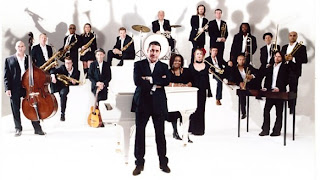 So, last week I mentioned that I was questioning how much I wanted to dedicate to this blog. I think that's a natural question to ask as school lets out, and I remind myself that while the individual days may seem long, my children will only be this little for a few more precious years. I don't plan to throw in the towel (if you were worried). A new friend reminded me today that this is the best of all worlds-- I get a creative outlet, I can share my expertise, and I can do it on my own time. And while I definitely am not in my summer groove yet, tomorrow is the start of a new month. A chance (at least in my own happy little head) to (re)prioritize and relish these next two months of summer. I'm not sure what my posting schedule will be. Some of that is up to free times (and weather) any given week. But, you can always subscribe via email in the upper right hand corner if you're not a fan of checking the blog only to realize I have been remiss about posting!
So, last week I mentioned that I was questioning how much I wanted to dedicate to this blog. I think that's a natural question to ask as school lets out, and I remind myself that while the individual days may seem long, my children will only be this little for a few more precious years. I don't plan to throw in the towel (if you were worried). A new friend reminded me today that this is the best of all worlds-- I get a creative outlet, I can share my expertise, and I can do it on my own time. And while I definitely am not in my summer groove yet, tomorrow is the start of a new month. A chance (at least in my own happy little head) to (re)prioritize and relish these next two months of summer. I'm not sure what my posting schedule will be. Some of that is up to free times (and weather) any given week. But, you can always subscribe via email in the upper right hand corner if you're not a fan of checking the blog only to realize I have been remiss about posting!p.s. A few of you have asked me about the screen test. No news, which I am going to assume (since I am so darn smart) is not good news. It bums me out that I focused on that instead of my kids the last week of school...and of course my ego takes a blow not knowing if it was me or them? (Did they really have their heart set on a totally different look or background than me?) But then another friend reminds me that it took guts to put myself out there. I have to think that maybe it's one of those karma things, where everything happens for a reason. It means that I do truly get to enjoy this summer and not worry about who gets my kids ready for camp/school, and know that heading into the fall, I'll still get to be the one getting them off the school bus and whipping up their homemade meals. And while I could have made a case for seizing that opportunity, deep down, accepting and enjoying the "ordinary" feels right.












